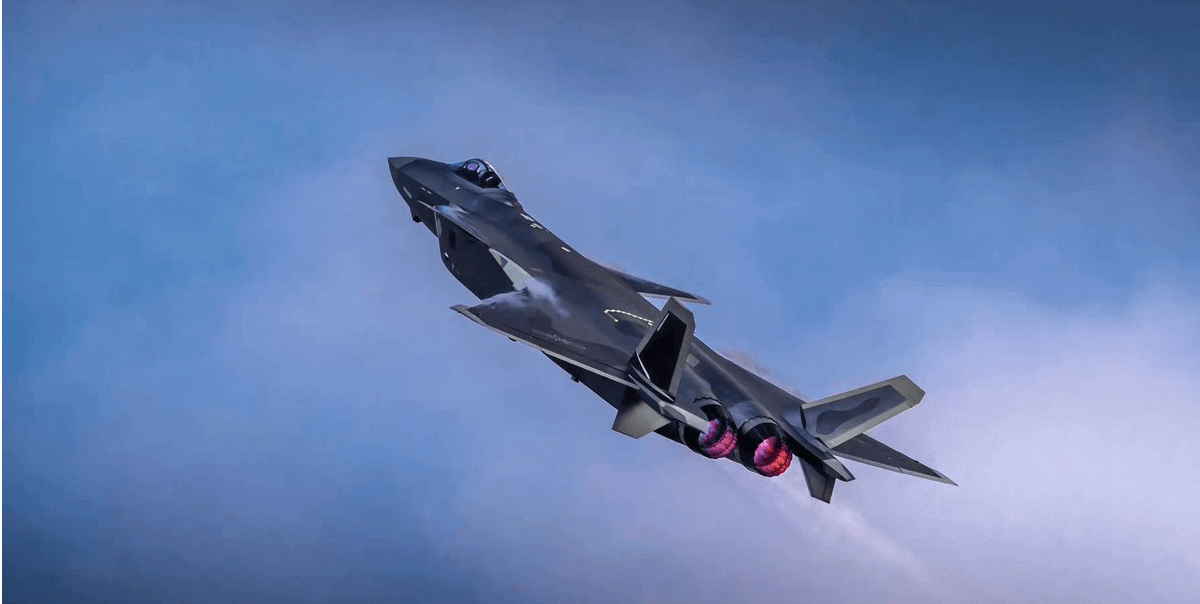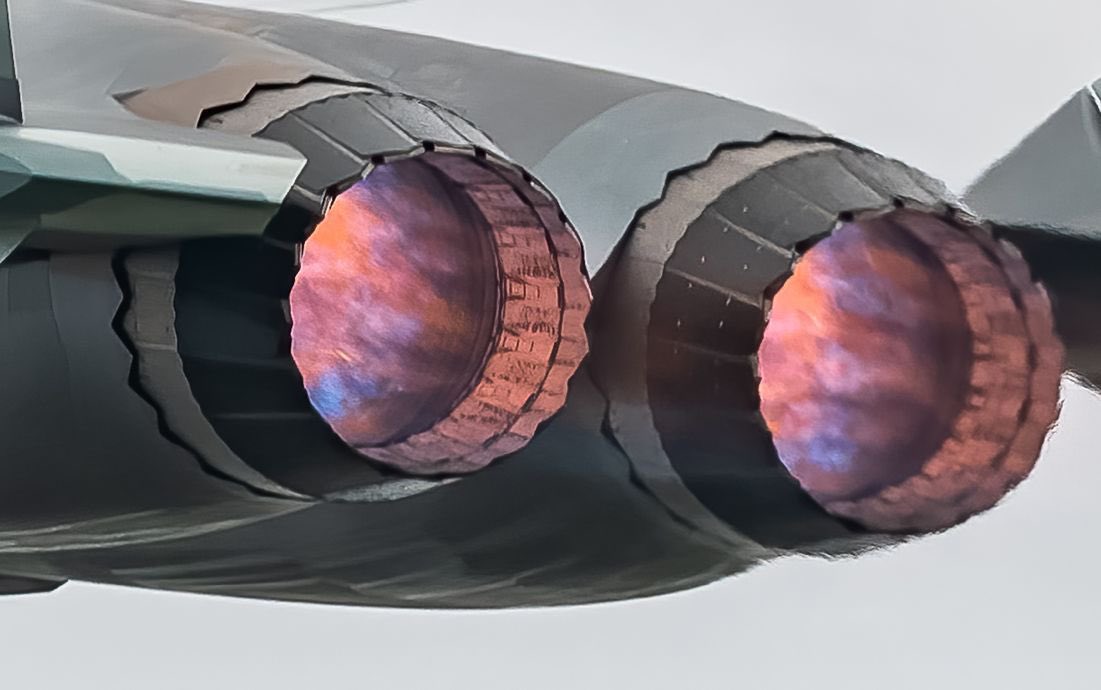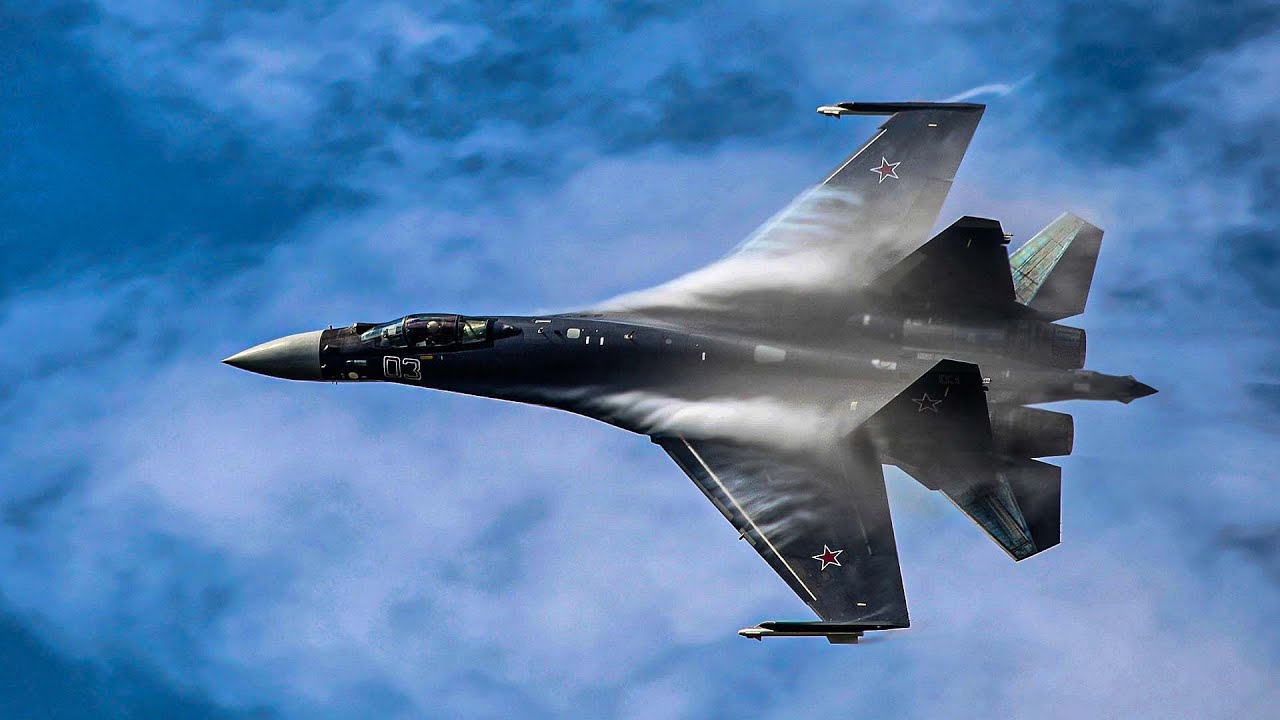A video has emerged of China’s J-20 ‘Mighty Dragon’ performing complex maneuvers at low speed, suggesting the fifth-generation aircraft may have finally acquired the much-awaited thrust vectoring capability.
Russia Accepts Military Inferiority; Says Most UAVs Don’t Meet Technical & Tactical Requirements
US Scrambles F-15 Air Superiority Fighter To Shoot Down Iranian Mohajer-6 Drone
A short clip of fifteen seconds shows the Mighty Dragon performing a vertical climb, shortly after which it makes turns and glides with its nose up.
China has long been working to develop the thrust vector controls for the WS-10C engines in the J-20, to bring the fighter’s performance closer to the American F-22 Raptor.
WS-15? pic.twitter.com/5fDzh55IKL
— 乐子壬1号机 (@kt396) September 20, 2022
The technology will enable the J-20 pilot to redirect the engine’s thrust by tilting the exhaust nozzles side by side as well as up and down, just like the F-22 or the Russian fourth-generation Su-30, Su-35, and MiG-35 fighters, and the fifth-generation Su-57 stealth fighter.

With the help of thrust-vectoring technology, the pilot can adjust pitch, roll, and yaw, supporting the aircraft’s super-maneuverable flight characteristics during within-visual range (WVR) combat scenarios wherein the fighter may have to maneuver nearby enemies and evade incoming missiles.
Limitations Of The WS-10 Engines
The twin-engine J-20 ‘Mighty Dragon’ entered service in 2017 and currently remains China’s only operational fifth-generation stealth fighter.
The J-20 is powered by China’s homegrown WS-10C engine, an advanced variant of the basic WS-10 engine used on other fighters in the PLA Air Force (PLAAF) inventory.

However, the WS-10C did not have thrust-vector controls which limited the performance of the J-20 only as an interceptor or a strike fighter intended for hit-and-run attacks instead of being an air-superiority fighter designed to engage enemy fighters by performing tight air combat maneuvers.
As EurAsian Times discussed earlier, China has long struggled to master jet engine technology which requires deep expertise across various disciplines such as combustion, fluid dynamics, materials, control theory, etc.
China produced the WS-10 Taihang turbofan engine as part of its drive to completely replace the Russian-made AL-31F turbofans.

However, the WS-10 engines face severe quality-control issues that have hindered their mass production, often replacing them with Russian engines.
Furthermore, in the long run, China intends to equip its J-20 fighter jets with WS-15 ‘Emei’ engines, designed to compete with the Pratt & Whitney F-119 that powers the F-22 Raptors, but the coronavirus pandemic interrupted the testing and development work on the Emei.
The WS-15 is designed to produce a thrust of 177.93 kN, compared to the 160.14 kN thrust generated by the AL-31F M2 engine currently in use.
China’s Tryst With Thrust-Vectoring Technology
In December 2015, China signed a deal to acquire 24 Su-35S fighters from Russia, which is believed to have gained the country’s scientists and engineers access to the thrust-vector technology used in Russian jet engines.

After that, in 2018, China showcased its fourth-generation J-10B fighter equipped with the WS-10B-3 TVC (Thrust-Vector Control) engine at the Zhuhai Air Show, revealing that the country has developed the technology.
The single-engine J-10B dazzled the audience at the air show by performing a series of impressive maneuvers during a 15-minute performance which included the famous Pugachev’s Cobra and the Falling Leaf.
The Pugachev’s Cobra maneuver involves the pilot rapidly lifting the aircraft’s nose so much so that it would turn 90 degrees vertical to the ground with the pilot facing the sky, which results in the airframe forming an enormous airbrake, causing rapid slow-down of the airplane, the pilot has to make use of the engine thrust to maintain a near-constant altitude throughout this entire move.
While the Falling Leaf maneuver involves the pilot performing a controlled stall (or bringing an aircraft to a virtual stop) and descending toward the ground, the stall induces a spin in the aircraft, which the pilot counters using thrust-vector controls in the engine that begins a spin in the opposite direction.
This process is repeated as often as the pilot decides, and the plane resembles a leaf falling from the sky, slipping from one side to another, as it drifts toward the ground.
The F-35 Lacks Thrust Vector Controls
While China is still new to thrust vector controls (TWCs), most modern Russian fighter jets have this technology. On the contrary, most leading Western fighter jets do not use thrust-vector engines.
For example, the F-35 Lightning II lacks thrust vectoring capability because the Western designers found that maneuvers relied on thrust vectoring, causing rapid depletion of an aircraft’s energy in terms of speed and altitude, leaving it in a low-energy state susceptible to follow-on attacks.
Moreover, the US air combat doctrine stresses maintaining a high-energy state and conducting stealthy, beyond-visual-range (BVR) missile attacks.
Therefore, American designers decided to drop the thrust-vectoring capability in favor of other systems or capabilities that play a more critical role in modern air combat, such as Electro-Optical/Infrared sensors, electronic support measures (ESM) sensors, jammers, etc.
- Contact the author at tanmaykadam700@gmail.com
- Follow EurAsian Times on Google News




